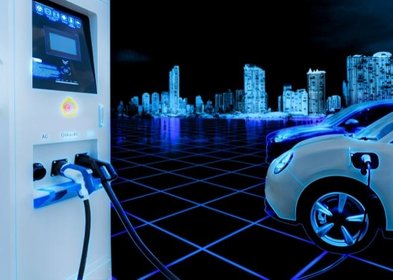
12/09/2022
A new business opportunity for the electric market? The charging service system
Francesca Del Bello
A market that could be worth up to EUR 13.5 billion by 2030, according to estimates by Bain and Company
The objective of stopping the sales of petrol- or diesel-powered vehicles from 2035 appears ambitious. On the one hand, the number of purely electric vehicles - the so-called BEVS - still represents a small slice of the entire Italian car market. On the other hand, the needs of companies that have to prepare for reconversion in order to remain competitive on the market cannot be neglected. In fact, on this issue, the decision taken by the Environment Ministers has raised quite a number of concerns on the part of industry. Companies will be required to make a major effort, in terms of research and development and beyond, which hopefully will be supported by adequate investment.
Among the most interesting profit opportunities related to the new mobility system, a report by Bain and Company identifies the business of electric charging stations, which according to the consultancy firm will be worth up to EUR 13.5 billion by 2030 in the three markets covered by the research, Europe, the United States and China. “Charging infrastructure and services critical to the adoption of battery-powered EVs (BEVs) are a huge and strategic new business opportunity”, comments Alessandro Cadei, EMEA Energy & Utilities practice leader at Bain & Company. “By 2030, revenues related to electric vehicle charging in Europe, the US and China will grow significantly, with smart energy services driving growth and accounting for about a third of total revenues. It is important to bear in mind that electric vehicle charging is a complex sector. Market characteristics vary significantly by country, location for charging, company position in the overall value chain, and business model”, Cadei concludes.
All three main segments concerning electric vehicle charging, hardware and installation, charging and smart energy services, will be affected by the profit growth calculated by the consultancy firm. Growth that needs to be addressed with a strategic but still flexible approach, and that will involve players from different industrial backgrounds: as Cadei goes on to emphasise, the “participants in the new charging ecosystem come from different worlds: automakers, energy operators (both oil & gas firms and the power world), utility companies, equipment manufacturers, software firms, charge-point operators, retailers, infrastructure funds, and start-ups, but also large-scale retail operators or parking management companies. Each has a different set of assets and incentives and a different role in the broader ecosystem. Those differences create an opportunity to form successful partnerships”.
As Bain's research notes, companies are already adapting their business models according to their geographic area of reference. The differences vary, of course, according to the share of electric vehicle sales (Bain's estimates indicate an increase of 55 per cent in Europe, 40 per cent in China and 32 per cent in the United States by 2030), the driving habits and charging opportunities in each region, and market regulations (the European Union, for example, aims to create a policy framework to improve energy storage and expand services).
With regard to the place of recharging - home, workplace, destination or transit - the construction of the infrastructure as a whole will have to be implemented in the short term, thus prioritising investment in destination recharging points. In this regard, places such as supermarkets or shopping centres are good examples, or transit points - motorways or highways - for which site location, utilisation rates and reliability are crucial. It is likely, however, that over a longer time horizon a large pool of profits will be represented by new generation services related to charging at home and workplaces. These include vehicle-to-grid charging (this is, to put it simply, a two-way charging system that allows energy to be exchanged with the electricity grid, stabilising it) and vehicle-to-home charging (again, a two-way system that allows energy to be fed into a home). These systems that are all the more interesting the more demand volumes for solar or wind power grow.
Among the most interesting profit opportunities related to the new mobility system, a report by Bain and Company identifies the business of electric charging stations, which according to the consultancy firm will be worth up to EUR 13.5 billion by 2030 in the three markets covered by the research, Europe, the United States and China. “Charging infrastructure and services critical to the adoption of battery-powered EVs (BEVs) are a huge and strategic new business opportunity”, comments Alessandro Cadei, EMEA Energy & Utilities practice leader at Bain & Company. “By 2030, revenues related to electric vehicle charging in Europe, the US and China will grow significantly, with smart energy services driving growth and accounting for about a third of total revenues. It is important to bear in mind that electric vehicle charging is a complex sector. Market characteristics vary significantly by country, location for charging, company position in the overall value chain, and business model”, Cadei concludes.
All three main segments concerning electric vehicle charging, hardware and installation, charging and smart energy services, will be affected by the profit growth calculated by the consultancy firm. Growth that needs to be addressed with a strategic but still flexible approach, and that will involve players from different industrial backgrounds: as Cadei goes on to emphasise, the “participants in the new charging ecosystem come from different worlds: automakers, energy operators (both oil & gas firms and the power world), utility companies, equipment manufacturers, software firms, charge-point operators, retailers, infrastructure funds, and start-ups, but also large-scale retail operators or parking management companies. Each has a different set of assets and incentives and a different role in the broader ecosystem. Those differences create an opportunity to form successful partnerships”.
As Bain's research notes, companies are already adapting their business models according to their geographic area of reference. The differences vary, of course, according to the share of electric vehicle sales (Bain's estimates indicate an increase of 55 per cent in Europe, 40 per cent in China and 32 per cent in the United States by 2030), the driving habits and charging opportunities in each region, and market regulations (the European Union, for example, aims to create a policy framework to improve energy storage and expand services).
With regard to the place of recharging - home, workplace, destination or transit - the construction of the infrastructure as a whole will have to be implemented in the short term, thus prioritising investment in destination recharging points. In this regard, places such as supermarkets or shopping centres are good examples, or transit points - motorways or highways - for which site location, utilisation rates and reliability are crucial. It is likely, however, that over a longer time horizon a large pool of profits will be represented by new generation services related to charging at home and workplaces. These include vehicle-to-grid charging (this is, to put it simply, a two-way charging system that allows energy to be exchanged with the electricity grid, stabilising it) and vehicle-to-home charging (again, a two-way system that allows energy to be fed into a home). These systems that are all the more interesting the more demand volumes for solar or wind power grow.






